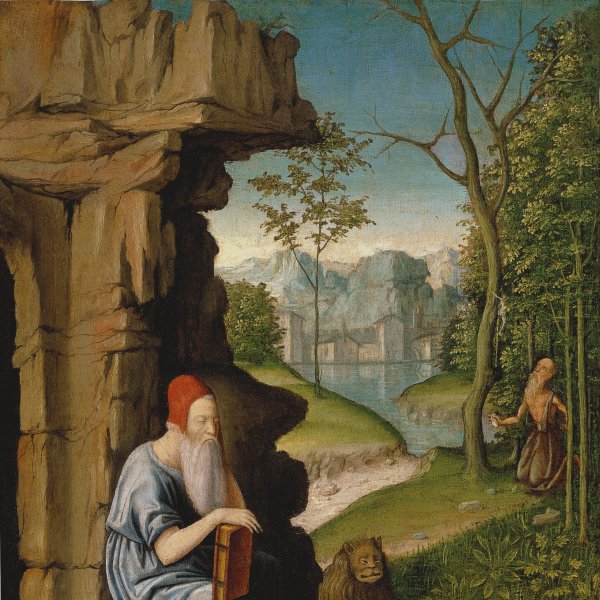Bartolomeo Montagna
Orzinuovi or Biron, ca. 1450-Vicenza, 1523
It is not known whether Montagna was born in Orzinuovi, near Brescia, from where his family originated, or Biron (Vicenza) where his family settled around 1450. Montagna was the most important painter in Vicenza in the last quarter of the 15th century and the first quarter of the 16th. His son continued his activities, and was particularly noted in the field of printmaking. In 1469 Montagna travelled to Venice, after which he is once again documented in Vicenza in 1474. The influence of Antonello da Messina and Alvise Vivarini is evident in his style with its three-dimensional modelling based on simple, geometrical forms. In addition, the more linear, soft and luminous style of Giovanni Bellini is also to be detected in his work. These two differing approaches evident in Montagna’s style have given rise to various doubts regarding his early training, for example whether and for how long he was a pupil of Bellini before absorbing the work of Antonello, or vice versa. Art historians have generally considered his last fifteen years to mark a decline in the quality of his work; during this period Montagna was less prolific and showed little interest in reflecting new innovations. He gradually abandoned his activities in favour of his son and his workshop.
In the 1460s and 1470s Montagna received important commissions in Vicenza, including the altarpiece for the church of San Bartolommeo (Museo Civico, Vicenza). In 1482 he was working in Venice for the Scuola Grande di San Marco. Dating from 1499 is the altarpiece painted for San Michele in Vicenza with The Virgin and Child enthroned with Saints and musical Angels (Pinacoteca di Brera, Milan) Montagna also produced major fresco cycles, notably one on the life of Saint Biagio in the church of SS. Nazaro e Celso in Verona.
In the 1460s and 1470s Montagna received important commissions in Vicenza, including the altarpiece for the church of San Bartolommeo (Museo Civico, Vicenza). In 1482 he was working in Venice for the Scuola Grande di San Marco. Dating from 1499 is the altarpiece painted for San Michele in Vicenza with The Virgin and Child enthroned with Saints and musical Angels (Pinacoteca di Brera, Milan) Montagna also produced major fresco cycles, notably one on the life of Saint Biagio in the church of SS. Nazaro e Celso in Verona.





